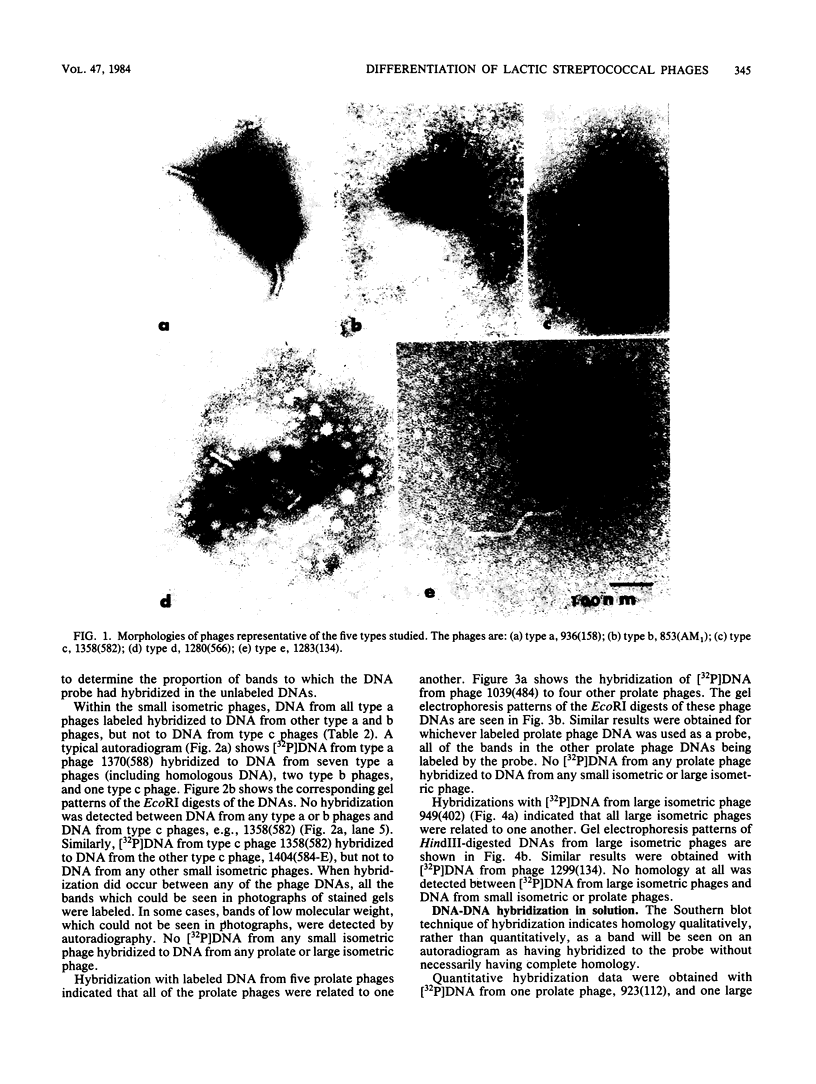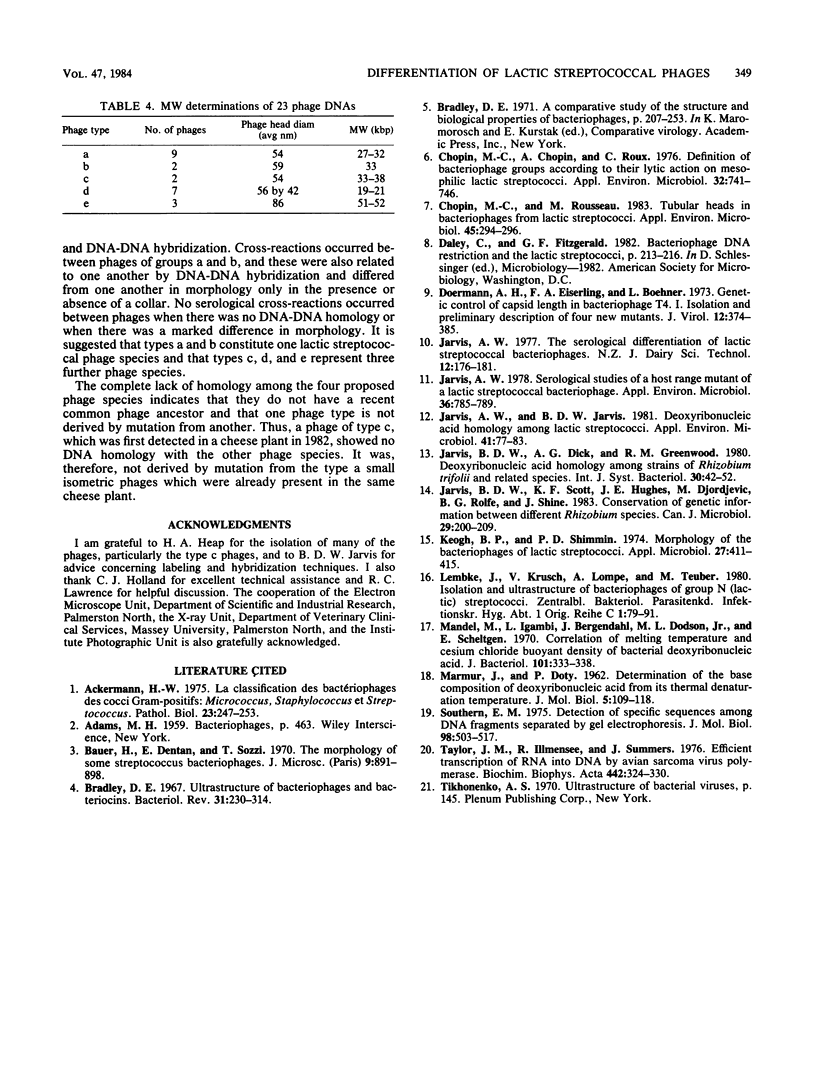Abstract
Twenty-five lactic streptococcal bacteriophages were differentiated by DNA homology into four species. Complete correlation was found between DNA homology groups and morphological characteristics of the phages except that two phage types, which differed in only the presence or absence of a collar, were one species by DNA homology. These findings were supported by serological data and differences in DNA molecular weights of the proposed species. The complete lack of homology between these phage species indicates that they are unlikely to have a recent common phage ancestor and that one morphological type of phage has not been derived by mutation from a phage of another morphological type.
Full text
PDF






Images in this article
Selected References
These references are in PubMed. This may not be the complete list of references from this article.
- Ackermann H. W. La classification des bactériophages des cocci Gram-positifs: Micrococcus, Staphylococcus et Streptococcus. Pathol Biol (Paris) 1975 Mar;23(3):247–253. [PubMed] [Google Scholar]
- Bradley D. E. Ultrastructure of bacteriophage and bacteriocins. Bacteriol Rev. 1967 Dec;31(4):230–314. doi: 10.1128/br.31.4.230-314.1967. [DOI] [PMC free article] [PubMed] [Google Scholar]
- Chopin M. C., Chopin A., Roux C. Definition of bacteriophage groups according to their lytic action on mesophilic lactic streptococci. Appl Environ Microbiol. 1976 Dec;32(6):741–746. doi: 10.1128/aem.32.6.741-746.1976. [DOI] [PMC free article] [PubMed] [Google Scholar]
- Chopin M. C., Rousseau M. Tubular heads in bacteriophages from lactic streptococci. Appl Environ Microbiol. 1983 Jan;45(1):294–296. doi: 10.1128/aem.45.1.294-296.1983. [DOI] [PMC free article] [PubMed] [Google Scholar]
- Doermann A. H., Eiserling F. A., Boehner L. Genetic control of capsid length in bacteriophage T4. I. Isolation and preliminary description of four new mutants. J Virol. 1973 Aug;12(2):374–385. doi: 10.1128/jvi.12.2.374-385.1973. [DOI] [PMC free article] [PubMed] [Google Scholar]
- Jarvis A. W., Jarvis B. D. Deoxyribonucleic Acid homology among lactic streptococci. Appl Environ Microbiol. 1981 Jan;41(1):77–83. doi: 10.1128/aem.41.1.77-83.1981. [DOI] [PMC free article] [PubMed] [Google Scholar]
- Jarvis A. W. Serological studies of a host range mutant of a lactic streptococcal bacteriophage. Appl Environ Microbiol. 1978 Dec;36(6):785–789. doi: 10.1128/aem.36.6.785-789.1978. [DOI] [PMC free article] [PubMed] [Google Scholar]
- Keogh B. P., Shimmin P. D. Morphology of the bacteriophages of lactic streptococci. Appl Microbiol. 1974 Feb;27(2):411–415. doi: 10.1128/am.27.2.411-415.1974. [DOI] [PMC free article] [PubMed] [Google Scholar]
- MARMUR J., DOTY P. Determination of the base composition of deoxyribonucleic acid from its thermal denaturation temperature. J Mol Biol. 1962 Jul;5:109–118. doi: 10.1016/s0022-2836(62)80066-7. [DOI] [PubMed] [Google Scholar]
- Mandel M., Igambi L., Bergendahl J., Dodson M. L., Jr, Scheltgen E. Correlation of melting temperature and cesium chloride buoyant density of bacterial deoxyribonucleic acid. J Bacteriol. 1970 Feb;101(2):333–338. doi: 10.1128/jb.101.2.333-338.1970. [DOI] [PMC free article] [PubMed] [Google Scholar]
- Southern E. M. Detection of specific sequences among DNA fragments separated by gel electrophoresis. J Mol Biol. 1975 Nov 5;98(3):503–517. doi: 10.1016/s0022-2836(75)80083-0. [DOI] [PubMed] [Google Scholar]
- Taylor J. M., Illmensee R., Summers J. Efficeint transcription of RNA into DNA by avian sarcoma virus polymerase. Biochim Biophys Acta. 1976 Sep 6;442(3):324–330. doi: 10.1016/0005-2787(76)90307-5. [DOI] [PubMed] [Google Scholar]







